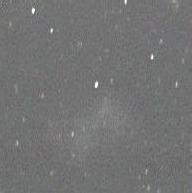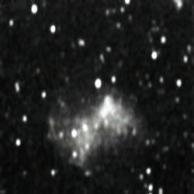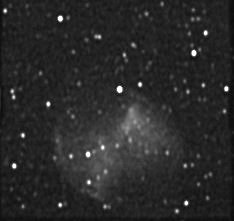
| Christoph Petermann | Homepage |
|
Astro Image Processing |
Last Update: 1 June 2001
This page contains my worksheet for my Astronomical imageprocessing. Since consequently following these schemes I get good results. This work does take a lot of time. I also optimized older images made with my webcam with very good results. The intermediate space used on a harddisk for producing on single image easily reaches several hundred megabytes.
Files
I usually generate the following file hierarchy:
astroimages/[date]/ast/ containing raw .ast CCD camera files like
d:/astroimages/2001-03-12/ast/0000001.ast d:/astroimages/2001-03-12/ast/0000002.ast d:/astroimages/2001-03-12/ast/0000003.ast
make there a working directory d:/astroimages/2001-03-12/work where I make all processes.
make a result directory like: d:/astroimages/2001-03-12/result
I try to keep this format every time.
CCDCONV OES .AST format to Fits .FTS. The Program is by Andre Wulff. As the program does not work correctly you have to flip or mirror the image at the end of the process.
Conversion rename manually "0000000x.fts" to "000000x.fts" for 01 ..09, because IRIS needs: 0000001.fts .. 0000009.fts 00000010.fts and OES generates a leeding "0" |
with the use of IRIS
| Find the 0 = Black level offset | |
| Add a constant (negative) to the image sequence= 0 level | offset2 000000 a [offset] [num] |
| Find the maximum brightness level (MaxBright = ca 4000) | mult2 a b [coeff] [num] |
| Multiply the sequence with 32000/MaxBright | |
| Find and sort the best images | bestof b |
| Select and sort out | select b c |
| register planetary (2) alt : menu ! | pregister c d [size=256] [num] |
| Number I want to add i.e. NA = 10 (example) Determine [coeff2] = 1/NA | |
| Multiply the sequence with 32000/MaxBright | mult2 d e [coeff2] [num] |
| Add all images | add2 e [NA] |
| Save the result first | save opt_raw(.fts is assumed) |
| option multiply the size | scale 2 x y |
| multiply the size (for OES LcCCD07) to get a square image | scale 2 1.33 1.551 |
| Optimize the image | |
| repeat ... until the image looks good | unsharp 1.5 12 (down to 0.7 1.5) gauss 0.8 .. 1.0 for noise reduction |
| flip the image horizontal as CCDCONV does not convert correctly | |
Deep Sky processing I do very similar to the planetary processing. Even it seems to be a lot of work, I consequently follow these steps.
 | This is a raw image from the camera with no darkfield subtracted. |
 | This image I have processed with PictureWindow 2.0 in May 2000 |

| After I got familiar with IRIS, I came to this result showing much more details and fainter stars than the earlier result above. |
| Get the first image and repeat | load 00000001.fts |
| For my small images I have to resample and adjust the images to get a square 256*256 image. As this does not work for a sequence, I do it for each image manually. | scale 2 1.333 1.551 |
| save image in a sequence using a [generic name] | save a1 ; next time save a2 |
| Find the 0 = Black level offset (if necessary). I subtract the dark field in the CCD camera program already. | |
| register alt : menu ! | register a b [size=256] [num] |
| Number I want to add i.e. NA = 10 (example) | |
| Add all images | add2 b [NA] |
| Save the result first | save opt_raw(.fts is assumed) |
| Optimize the image | |
| repeat ... until the image looks good | 0.8 2.0 gauss 1.0 |
| flip the image horizontal as CCDCONV does not convert correctly | |
There are quite a number of tools available on the market, but I use only a few, because it is not necessary to use many different programs. After working with Picture Window 2.0 (www.dl-c.com) for a while, I came to IRIS by C.Buil. This software is free and does THE job. But many other programs do also a fine job. Stay with that one you like best.
|
Text and All Images are Copyright by Christoph Petermann DF9CY
|
GO (back) and visit my homepage